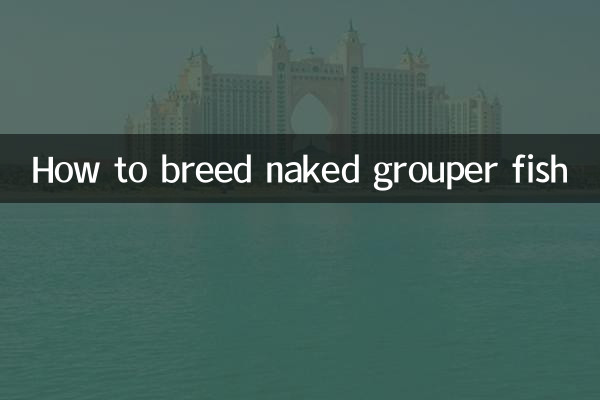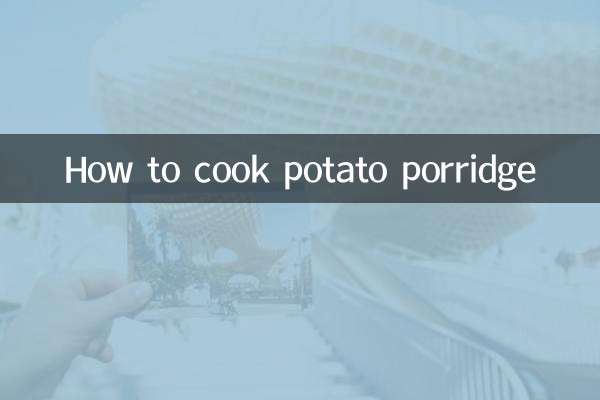How to breed naked grouper fish
As a freshwater fish with high economic value, striped fish has attracted more and more attention from farmers in recent years. In order to help farmers better master the breeding technology of naked grouper, this article will combine the hot topics and hot content on the Internet in the past 10 days to give you a detailed introduction to the breeding method of naked grouper from the aspects of breeding environment, feed feeding, disease prevention and control, etc.
1. Breeding environment

Naked grouper has high requirements for water quality and is suitable for growing in clear water with sufficient dissolved oxygen. The following are the environmental parameter requirements for breeding striped fish:
| project | parameter |
|---|---|
| water temperature | 20-28℃ |
| pH value | 6.5-7.5 |
| Dissolved oxygen | ≥5mg/L |
| Ammonia nitrogen content | ≤0.2mg/L |
| Nitrite content | ≤0.1mg/L |
The breeding pond should be selected in a place with sufficient sunshine and convenient water sources. The appropriate area is 1-3 acres, and the water depth should be maintained at 1.5-2 meters. The pond needs to be thoroughly cleaned and disinfected before breeding, using quicklime or bleaching powder.
2. Fish species selection and stocking
Choosing healthy, disease-free fish species is key. A good quality striped fish species should have the following characteristics:
| feature | standard |
|---|---|
| body length | 5-8cm |
| weight | 10-20g |
| body color | Bright and shiny |
| Mobility | Lively and responsive |
Stocking density depends on pond conditions and management level. General recommendations:
| Breeding method | Stocking density (tail/acre) |
|---|---|
| Raised alone | 1500-2000 |
| mixed culture | 800-1200 |
The best time for stocking is when the water temperature is stable above 15°C in spring, and it is best to do it in the morning on a sunny day.
3. Feeding
Naked grouper is an omnivorous fish, so attention should be paid to nutritional balance when choosing feed. The following are feeding recommendations for different growth stages:
| growth stage | Feed type | Feeding frequency | Feeding amount (accounting for body weight) |
|---|---|---|---|
| Fish fingerling stage | High protein powdered feed | 3-4 times/day | 5-8% |
| growth period | pellet feed | 2-3 times/day | 3-5% |
| nurturing period | Extruded feed | 2 times/day | 2-3% |
When feeding, we must adhere to the "four fixed" principles: timing, fixed point, fixed quality, and quantitative. At the same time, pay attention to the feeding situation of the fish and adjust the feeding amount in time.
4. Daily management
Daily management is a key link to ensure the success of breeding, which mainly includes the following:
| Manage projects | Specific requirements |
|---|---|
| water quality monitoring | Measure water temperature and pH value every day, and test ammonia nitrogen and nitrite every week |
| oxygenate | Turn on the aerator at the right time according to weather and water quality conditions |
| Xuntang | Once in the morning and once in the evening, observe fish activities and changes in water quality |
| Record | Keep detailed records of feeding amounts, medication usage, number of deaths, etc. |
Especially during the high temperature season in summer, we must pay close attention to changes in water quality to prevent hypoxia and disease.
5. Disease prevention and control
Common diseases and prevention methods of striped fish are as follows:
| Disease name | symptom | Prevention and control methods |
|---|---|---|
| bacterial enteritis | Anal redness and swelling, intestinal congestion | Feed antibiotic bait to improve water quality |
| saprolegnia | Cotton-like hyphae appear on the body surface | Take a salt bath to keep the water clean |
| Small melonworm disease | White spots appear on body surface | Increase water temperature and use special medication |
Prevention is the first priority, and comprehensive prevention and control is the key. Breeding water bodies should be disinfected regularly to keep the environment clean and avoid feed contamination.
6. Breeding cycle and economic benefits
The breeding cycle of naked grouper is generally 8-10 months, and the specific economic benefits are as follows:
| project | data |
|---|---|
| Breeding cycle | 8-10 months |
| survival rate | 70-85% |
| Yield per mu | 800-1200kg |
| market price | 20-30 yuan/kg |
| Production value per mu | 16,000-36,000 yuan |
Through scientific management, striped fish farming can achieve better economic benefits. It is recommended that farmers fully understand the market demand and conduct market research before starting breeding.
In short, striped fish farming is a highly technical job that requires farmers to master scientific farming methods and pay attention to detailed management. I hope this article can provide valuable reference for your breeding practice. In the actual breeding process, management measures must be flexibly adjusted according to specific conditions in order to obtain the best economic benefits.

check the details

check the details